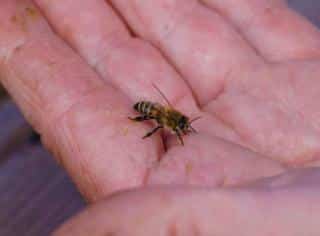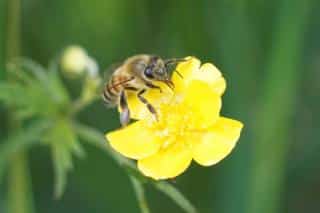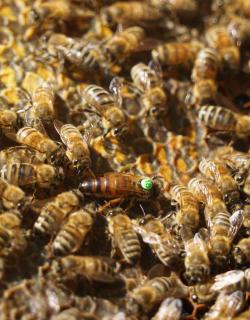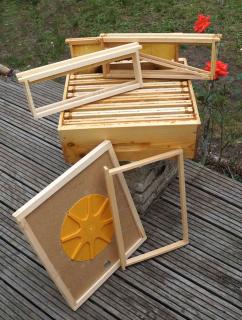

These days, the domesticated honeybee often makes the news for sad reasons: populations are dwindling and environmental consequences are dire.
Indeed, an individual honeybee is able to pollinate over 700 flowers an hour. This extraordinary performance makes it a precious ally in the vegetable patch and orchard.
Learn all there is to know about the common honeybee and find out how to attract and protect it in your garden.
Read also:
A flying insect belonging to the Hymenoptera order, the common honeybee is also known under many other names: European bee, honey fly, and also Apis mellifera in latin, which is its botanical name. All these names designate the same pollinating insect.

The common honeybee’s size depends on the individual you’re looking at:
 the queen (also called “queen bee”) is the largest, usually from 5/8ths to 6/8ths of an inch (15 to 20 mm);
the queen (also called “queen bee”) is the largest, usually from 5/8ths to 6/8ths of an inch (15 to 20 mm);The honeybee is often mistaken for a wasp. To tell them apart, simply remember that wasps don’t have any fuzz on their body, and the silhouette is very distinct: the point where abdomen and thorax meet is very thin. This characteristic is what led to the expression “wasp waist”, in women’s fashion!
Did you know… ?
Even though the honeybee has a stinger, it will only sting you as a last recourse: stinging other animals will kill it, too. This is because once the stinger is lodged under the skin, it can’t be pulled out. As a consequence, when the bee flies off, the venom sac rips out of the insect’s abdomen, and within an hour the bee dies.
The common honeybee is a gregarious insect that lives in a community that houses three types of individuals:
 The queen bee mates on a single day and then spends the rest of its life laying eggs (worker bees, future queens, and drones). This ensures the continuity of its colony. Its average lifespan is 3 to 4 years.
The queen bee mates on a single day and then spends the rest of its life laying eggs (worker bees, future queens, and drones). This ensures the continuity of its colony. Its average lifespan is 3 to 4 years.We’re all familiar with the crucial task that the common bee carries out: pollination. A honeybee never stops hopping from one flower to the next, making the species an excellent pollinator that measurably increases productivity of all kinds of crops. That’s why it’s important to protect and care for this insect.

There are many other things you can try:
To learn more, read:
If ever a runaway swarm appears in your garden, the best thing to do is to call a professional beekeeper. He or she will come collect the swarm and house it elsewhere.